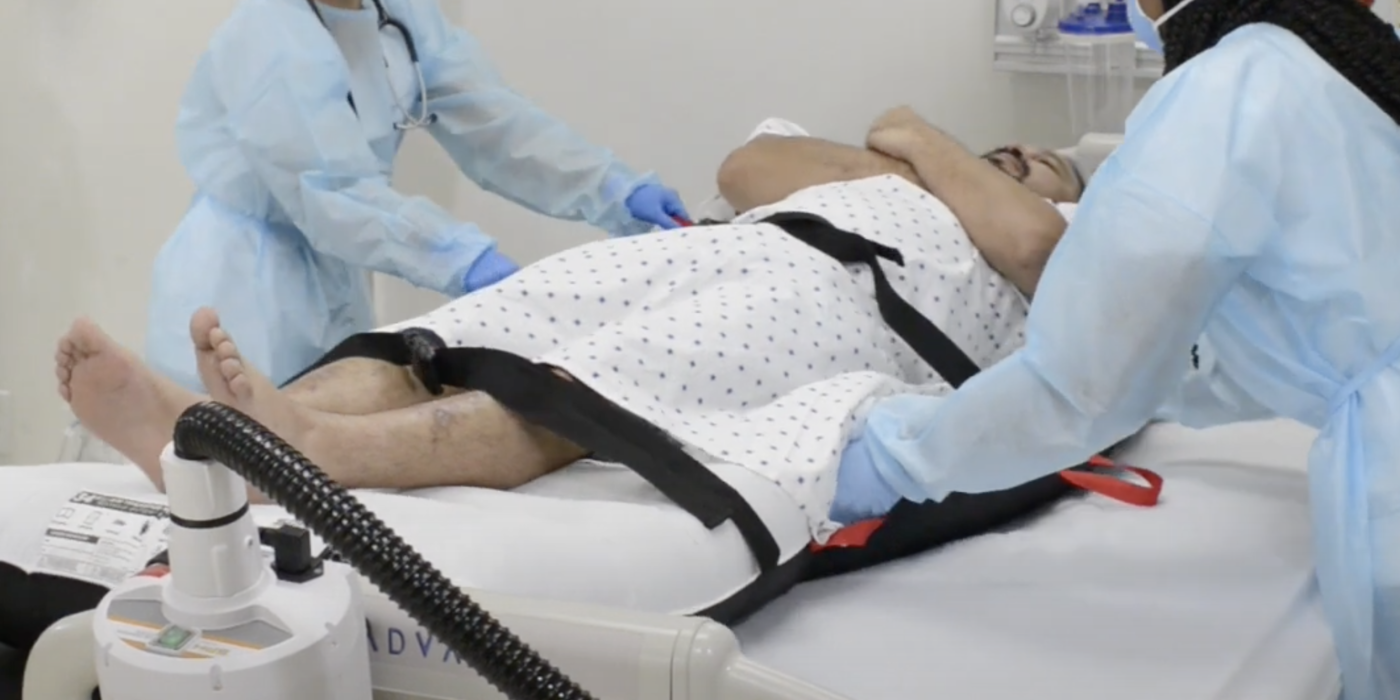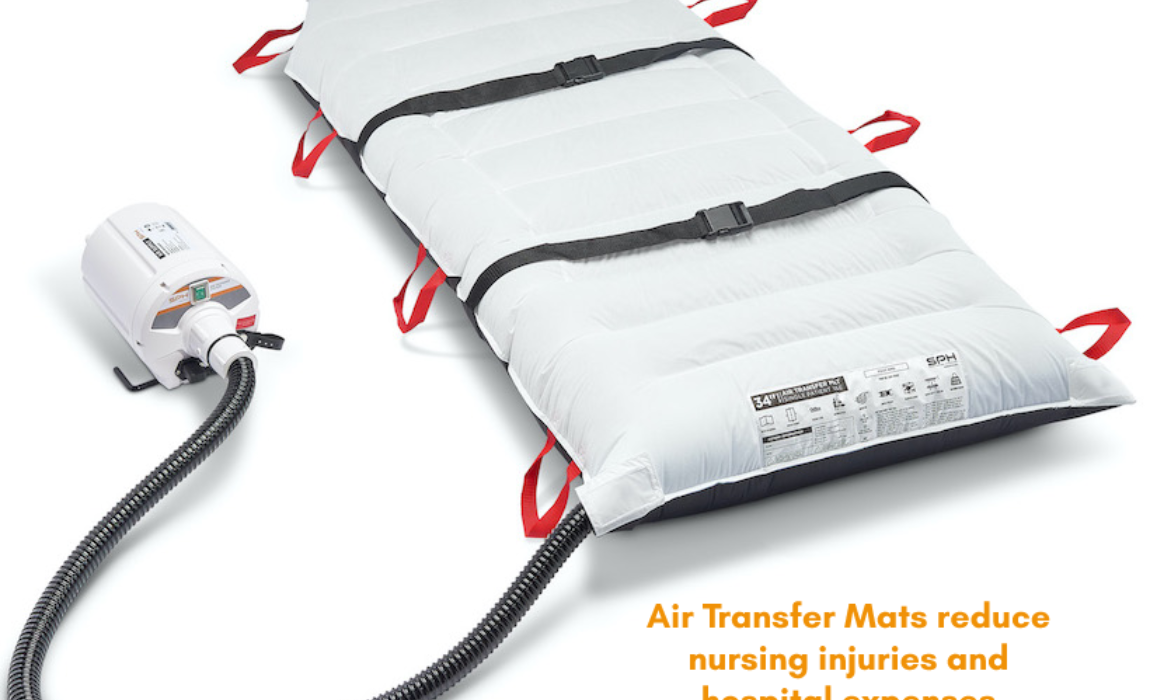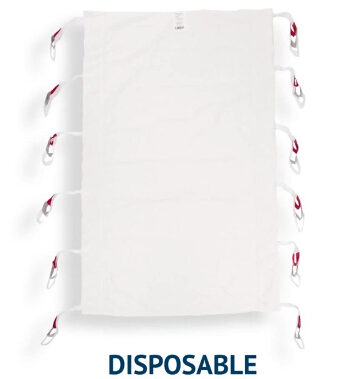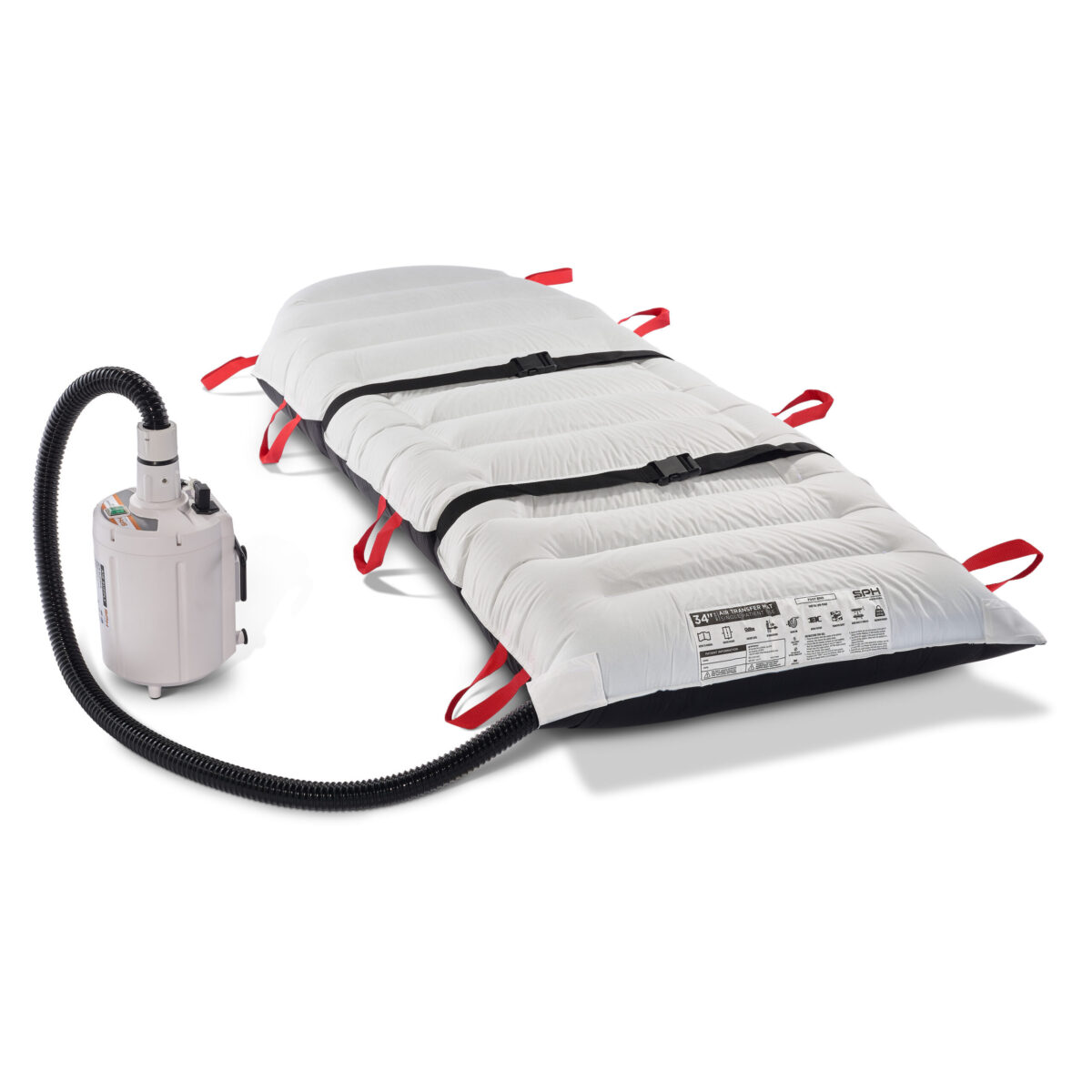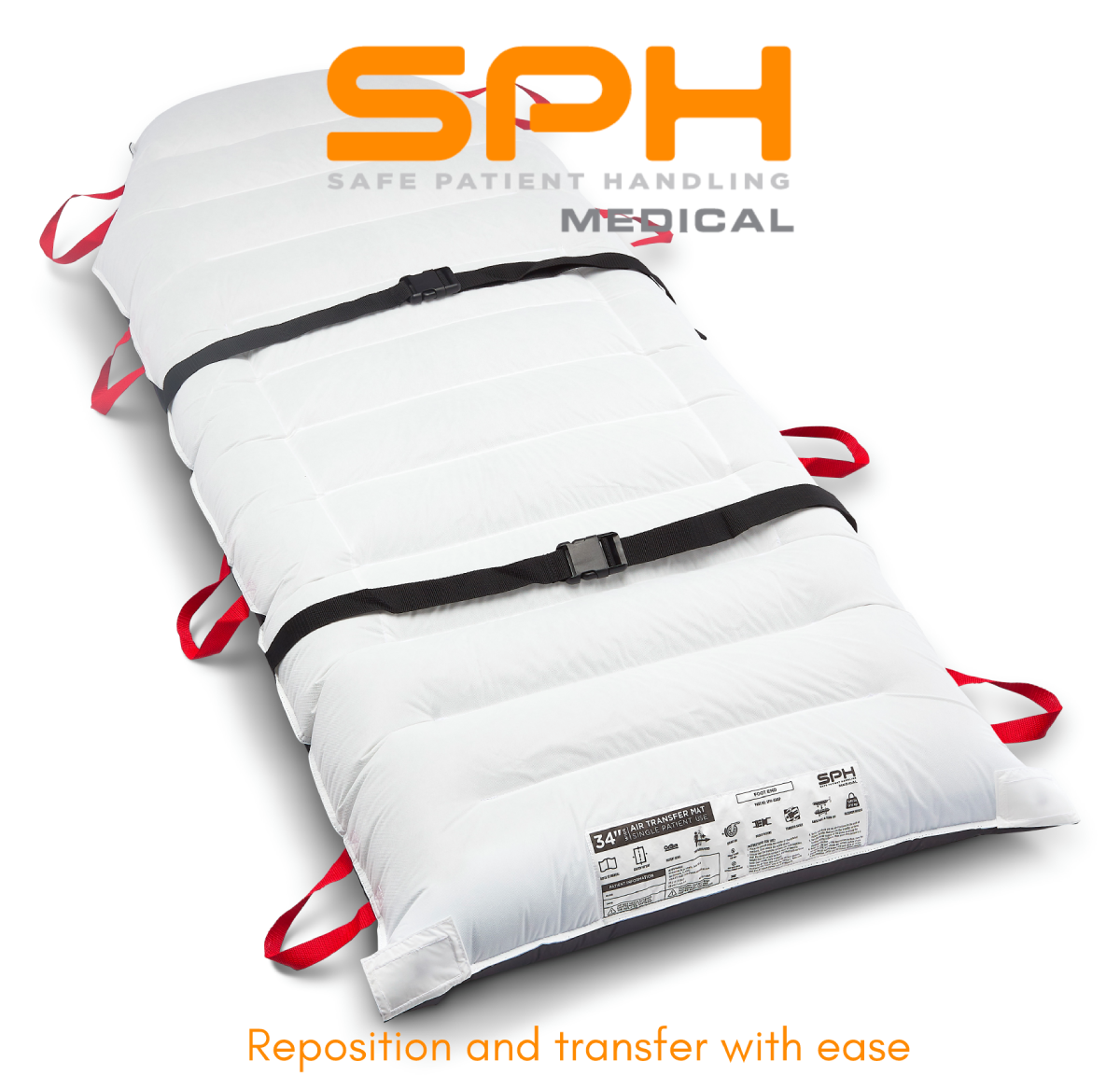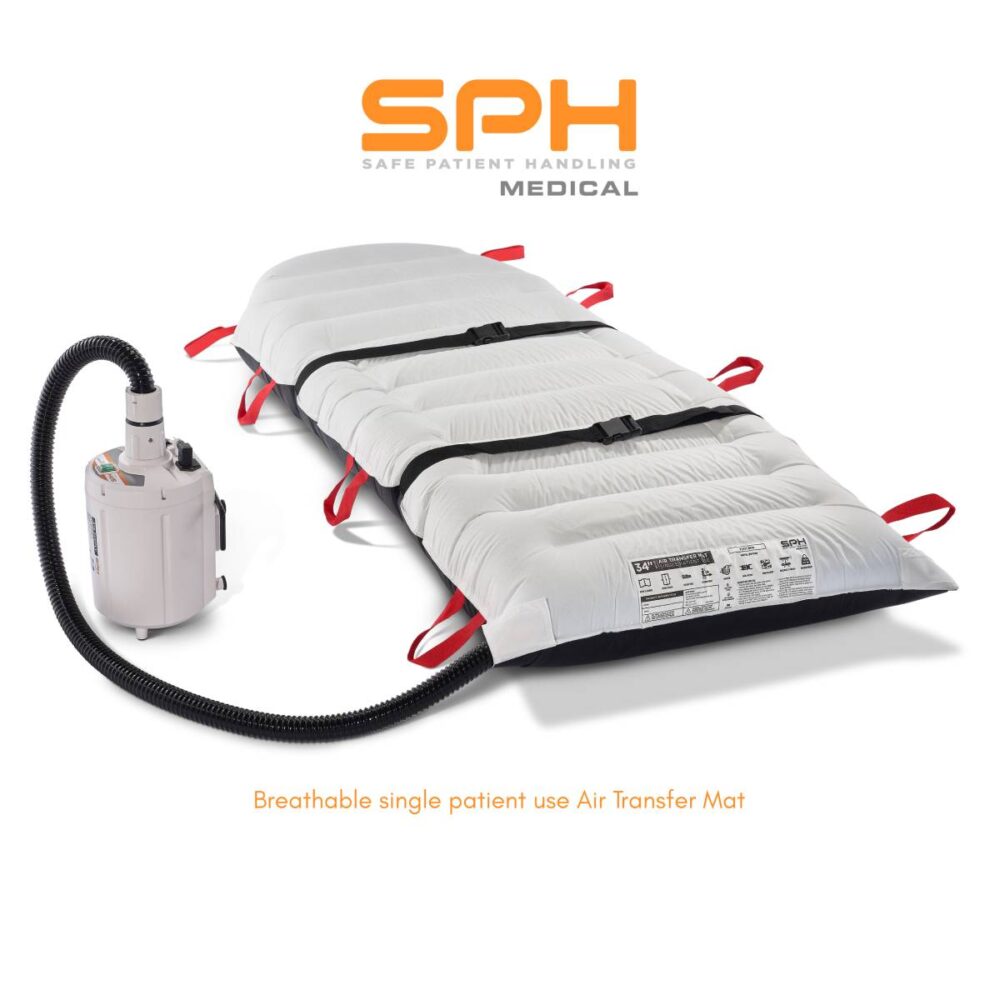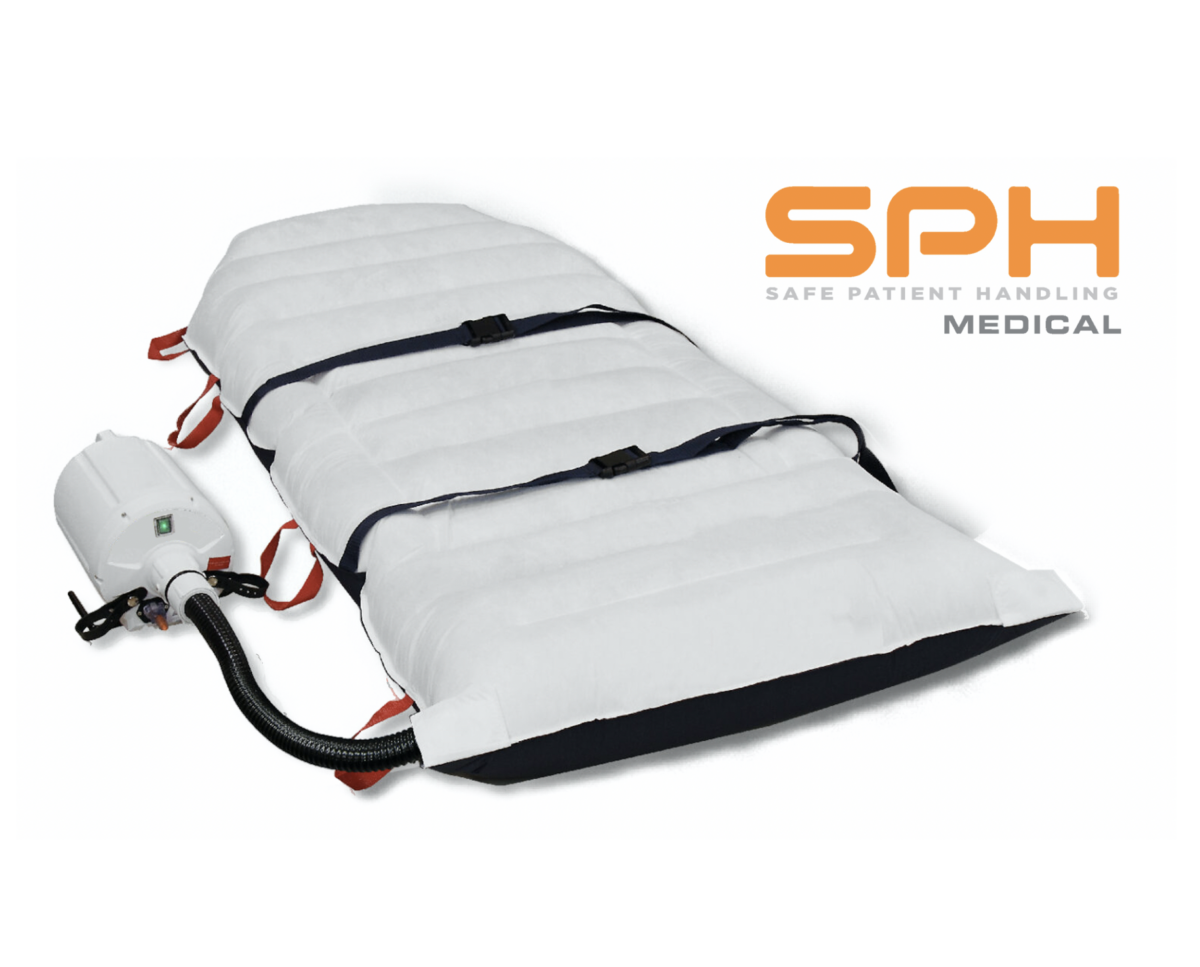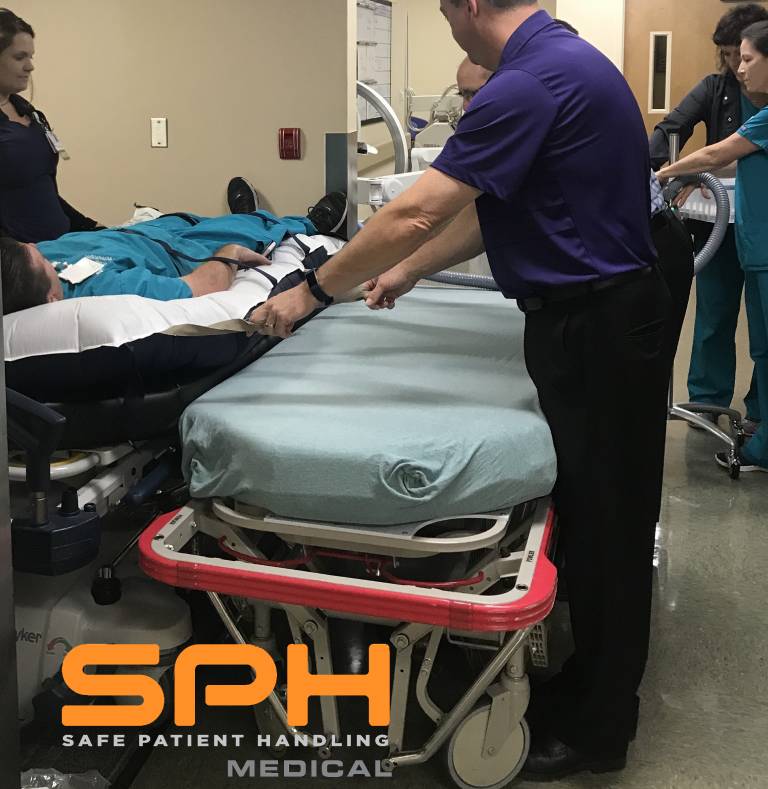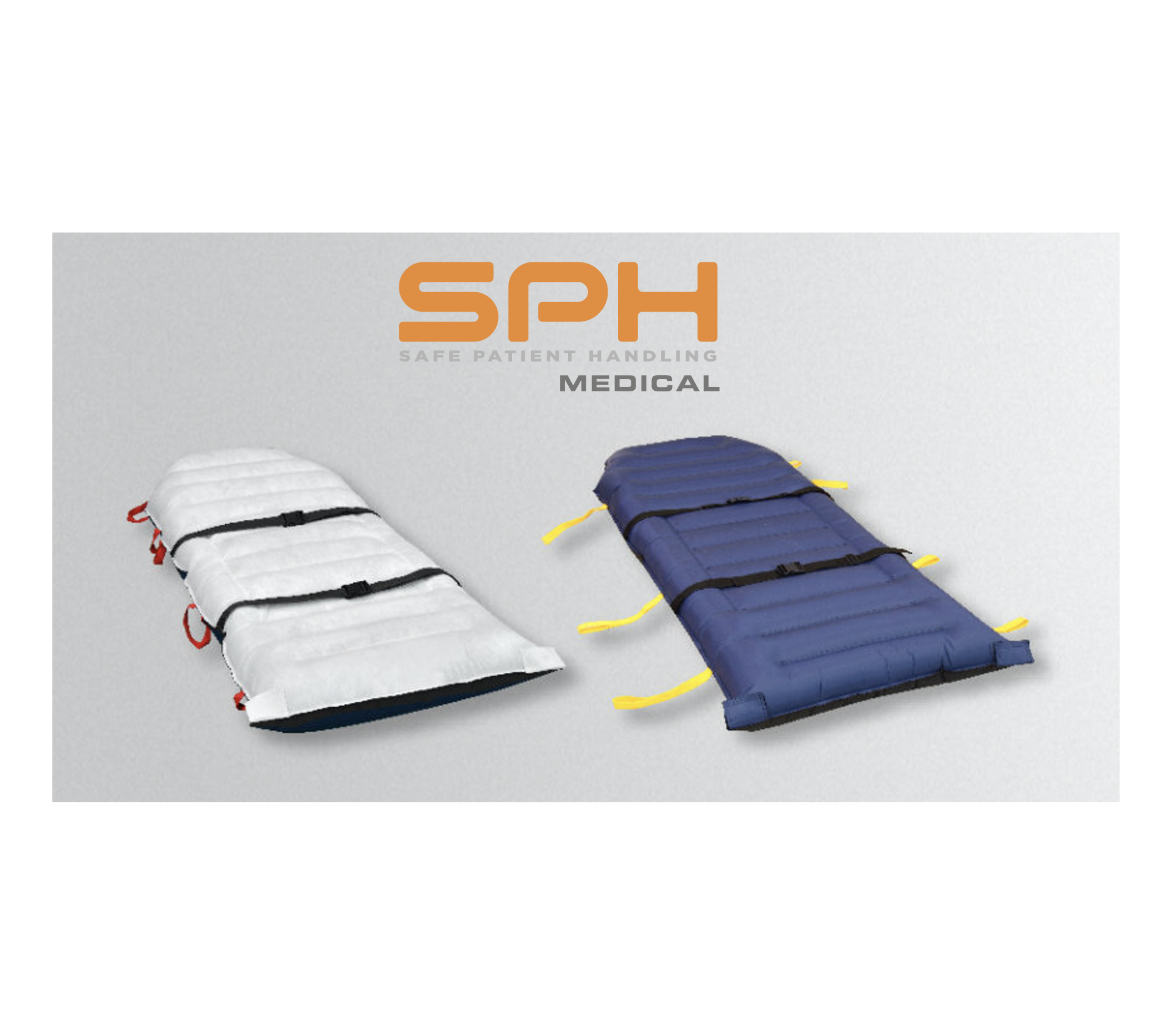In today’s healthcare landscape, nursing injuries are a growing concern. For years, hospitals have relied on traditional methods of transferring and repositioning patients in bed, but haven’t been able to keep up with the demands of patient care and the rising cost of health care. As a result, nursing staff are facing an alarming rate of injuries, from strains and sprains to more serious conditions. The nursing shortage has only exacerbated the situation, leaving hospitals with a difficult decision: how can they prevent these injuries while also ensuring quality care for their patients? The answer may lie in air powered transfer mattresses, a revolutionary injury prevention technology developed by leading medical device manufacturer SPH Medical. In this article, we’ll discuss the rising problem of nursing injuries and their implications amidst the nursing shortage, review the traditional methods of patient transfer, introduce air powered transfer mattresses from SPH Medical, and explain why revolutionizing patient transfers could be a major benefit for hospitals.
The Rising Problem: Nurse Injuries
The rates of nursing injuries are alarming, and continue to rise as the healthcare industry becomes more complex. In fact, according to a study conducted by the U.S. Department of Labor in 2019, nursing staff had an injury rate 3 times higher than that of all occupations combined—a staggering 8 out of 10 nurses reported experiencing an injury on the job. These injuries come with major implications: from sick days and lost work hours, to costly workers’ compensation claims.
The nursing shortage only compounds this issue. With fewer nurses and increasing workloads, hospitals are forced to rely on short-term staff who may not have adequate training in traditional patient transfer methods—all of which can increase the risk of injury for both nurses and patients alike.
Revolutionizing Patient Transfers in Hospitals
The traditional methods of patient transfer have been used for decades, but they come with a number of risks and inefficiencies. For instance, two of the most common manual patient handling tasks such as pushing or pulling patients up in bed, and transferring patients from bed to gurney —can strain the back, neck, and arms of nursing staff. This is particularly true when transferring bariatric patients, who may require more than two people to reposition them in bed.
Manual patient boosting or repositioning is one of the most dangerous methods of patient handling, as nursing staff must repeatedly turn and boost the patient every two hours, risking overexertion and injury. Lastly, lateral transfers are occurring in almost every inpatient unit in the hospital including in the surgery department. Many of these predictable lateral transfers can be avoided with the right solution to prevent staff injuries and improve efficiency and patient throughput.
The Solution: Air Transfer Systems and Mattresses
In an effort to reduce the risk of nursing injuries, SPH Medical is revolutionizing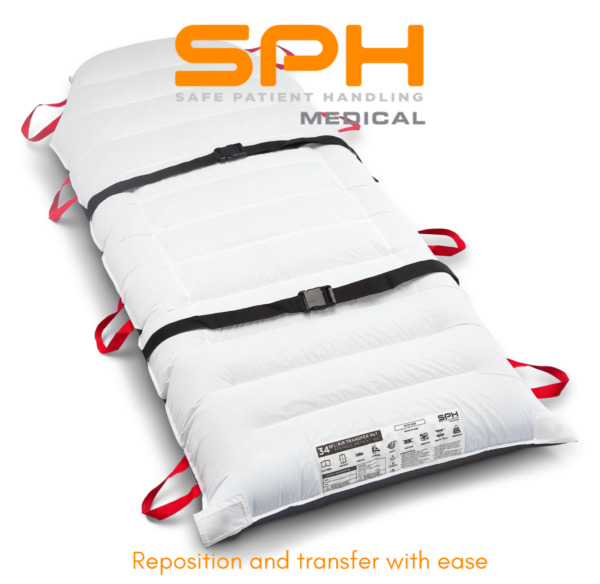 patient transfers with innovative technology. Hospitals can use this technology for lateral transfers between bed and gurney and repositioning in bed: air powered transfer mattresses. These mattresses are equipped with inflatable chambers that safety cradle the patient as the mattress inflates using the blower or air supply. Once the mattress has inflated, air flows out of the bottom of the mattress through hundreds of laser pin holes. The air being released through the bottom of the mattress significantly reduces friction allowing the patient and the mattress to easily float up in bed or over to another surface like a bed or exam table. The surgery department has a large volume of surgeries on a daily basis and just about every patient is still under anesthesia and unable to assist in getting off the OR table. Or staff are currently manually transferring patients off the OR table which puts them at risk. Once implemented, the Air Transfer Mattress reduces the amount of manual lifting, pushing and pulling required to reposition and transfer patients, significantly reducing risk of injury to nurses and surgery staff.
patient transfers with innovative technology. Hospitals can use this technology for lateral transfers between bed and gurney and repositioning in bed: air powered transfer mattresses. These mattresses are equipped with inflatable chambers that safety cradle the patient as the mattress inflates using the blower or air supply. Once the mattress has inflated, air flows out of the bottom of the mattress through hundreds of laser pin holes. The air being released through the bottom of the mattress significantly reduces friction allowing the patient and the mattress to easily float up in bed or over to another surface like a bed or exam table. The surgery department has a large volume of surgeries on a daily basis and just about every patient is still under anesthesia and unable to assist in getting off the OR table. Or staff are currently manually transferring patients off the OR table which puts them at risk. Once implemented, the Air Transfer Mattress reduces the amount of manual lifting, pushing and pulling required to reposition and transfer patients, significantly reducing risk of injury to nurses and surgery staff.
The Benefits of Switching to SPH Medical’s Air Transfer Systems
There are numerous benefits to switching to air powered transfer mattresses from SPH Medical. For starters, they reduce the risk of nursing injuries by taking much of the lifting, pushing, and pulling off of the shoulders of nursing staff. They also maximize efficiency by enabling healthcare professionals to reposition or transfer a patient quickly and easily with minimal physical effort—even bariatric patients can be maneuvered safely and securely. This helps improve efficiency on nursing floors, and can improve throughput in surgical departments. This time saving efficient translates to reduces wait times for patients, while allowing hospitals to maintain their throughput goals in surgery departments.
Finally, air powered transfer mattresses provide a more comfortable experience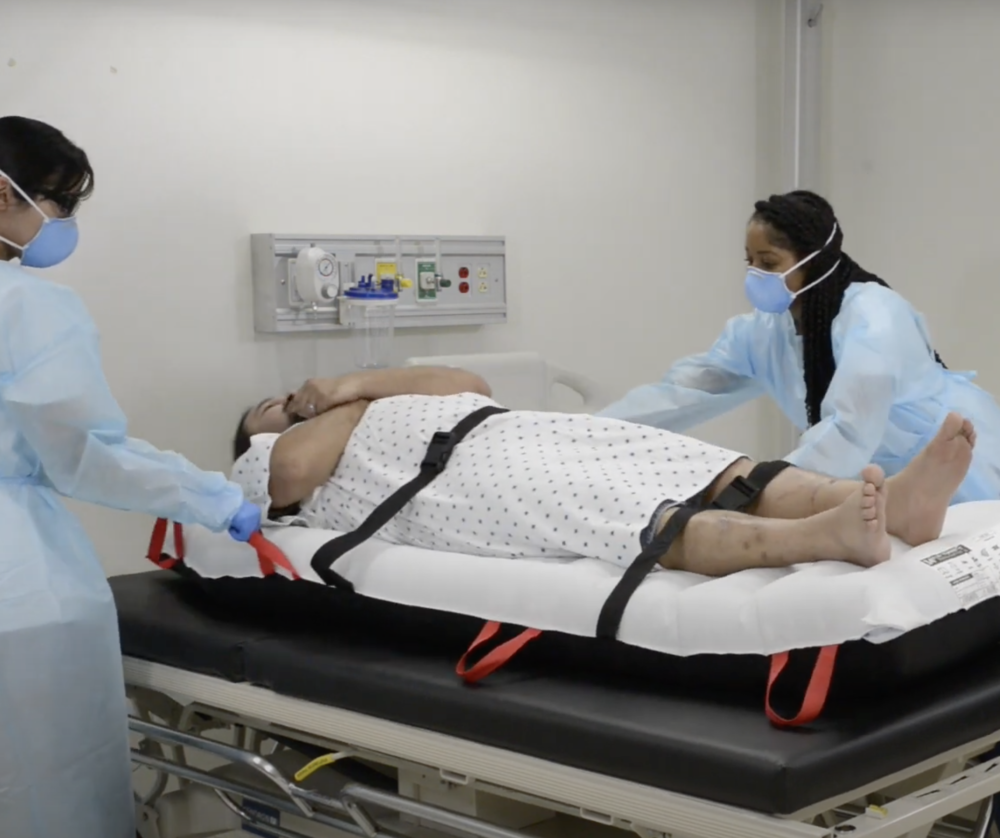 for patients. The mattress’s cushioning effect reduces the amount of pressure on the patient’s body during the transfer. Patient satisfaction scores are important in today’s healthcare environment and the value of improving both staff safety and patient satisfaction cannot be understated.
for patients. The mattress’s cushioning effect reduces the amount of pressure on the patient’s body during the transfer. Patient satisfaction scores are important in today’s healthcare environment and the value of improving both staff safety and patient satisfaction cannot be understated.
In Conclusion: Revolutionizing Patient Transfers
In light of the alarming rates of nursing injuries and the ongoing nursing shortage, hospitals must find innovative ways to reduce risk and improve efficiency. Switching to air powered transfer mattresses from SPH Medical could be a major benefit for hospitals: it reduces risk of injury, increases staff efficiency, decreases wait times for patients, and improves patient satisfaction. For more information about SPH Medical’s air powered transfer mattresses, visit their website today.
When it comes to improving patient safety and reducing staff injury rates, there is no better solution than implementing an air transfer mattress system from SPH Medical. By making the switch, hospitals will be able to improve overall efficiency and ensure that nurses and other healthcare professionals are able to perform their duties safely and effectively. Investing in the air transfer system is an investment that will pay dividends in terms of staff safety, patient satisfaction, and efficiency for many years to come.
Many hospitals are switching to SPH Medical’s Air Transfer Mattress from their current solution due to the cost savings they can achieve. And many others are adding the Air Transfer mattress for the first time and revolutionizing patient transfers, improve efficiency and patient safety. Either way the return on investment can be substantial when switching to SPH Medical.

